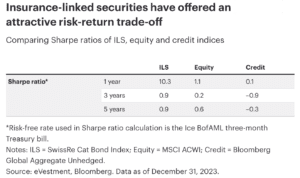Don't Panic! Social Security Isn't Going Away Anytime Soon

What You Need to Know
While the program faces problems, fearful speculation can trigger undue panic and poor decisions.
It’s important for advisors to help their clients understand the program isn’t just going to disappear.
Instead, a plethora of reforms are on the table, most of which would not derail the retirement plans of older Americans.
There may be good reason for younger generations of workers to question whether they will receive the full promised value of their Social Security benefits, given the significant financial challenges facing the federal retirement income insurance program. But those who are near or in retirement today should continue to plan to receive most, if not all, of their presently legislated benefits.
In fact, according to Brian Bass, managing director of wealth management at McLean Asset Management, clients who are planning for retirement in the near term could very well shortchange themselves by making poor Social Security claiming decisions based on fearful speculation about the program’s future.
It is all too common, Bass warns, for clients to believe they should claim benefits early so they can start “getting back what is theirs before benefits are cut” or the full retirement age is increased. In reality, the vast majority of clients should delay claiming benefits as long as possible — ideally to age 70.
Social Security reform is clearly needed, Bass says, and the size of the program’s funding gap is clearly very concerning. However, many reform options are available to policymakers, and the central importance of the program to the American retirement system cannot be overstated. For these reasons alone, many policy experts believe the program can and will be fixed, despite the challenging political and policy path ahead.
Bass made this case during an appearance on the latest episode of the “Retire With Style” podcast, hosted by Alex Murguia and Wade Pfau, the well-known retirement researchers and co-founders of the Retirement Income Style Awareness program. During the discussion, the trio discussed their shared viewpoint that the Social Security program is likely to (mostly) deliver on its promises for those Americans who are already near or living in retirement.
They agreed that younger generations could see changes in promised benefits, but it is likely that any such changes would be phased in slowly, giving affected workers time to adjust their retirement expectations. What’s clear today, the trio agreed, is that workers who have the means can put themselves in a much better position by staying committed to saving.
Some Important History
According to Murguia, Pfau and Bass, advisors can help their clients better understand the likely trajectory of the Social Security system by helping them understand some of the program’s basic history, which includes an extensive number of both small and significant reforms made over the program’s nearly 90 years.
To begin with, the Great Depression was the clear catalyst for the Social Security Act of 1935, and some of its provisions — notably the means-tested programs — were intended to offer immediate relief to families. However, the old-age insurance program was not designed specifically to deal with the economic crisis of that era. In fact, the monthly benefit payments under the original act were not scheduled to begin until 1942.
According to Murguia, Pfau and Bass, this original “delayed effect” has become an important theme in the history of the Social Security program. That is, when changes are made to the program, their impact is generally not felt for years or even decades.
This was true in the last round of significant amendments made to the program in the early 1980s. For example, the amendments did change the retirement age, but they phased in a gradual increase in the age for collecting full Social Security retirement benefits from 65 to 67 over a 22-year period, with an 11-year hiatus at which the retirement age would remain at 66.
Another important historical fact to understand, the trio agree, is that the Social Security program as originally conceived and operated for decades did not involve a substantial trust fund. It was actually the reforms in the early 1980s, especially the new taxation of benefits, that allowed for the buildup of a major trust fund that today supports the payment of benefits.




